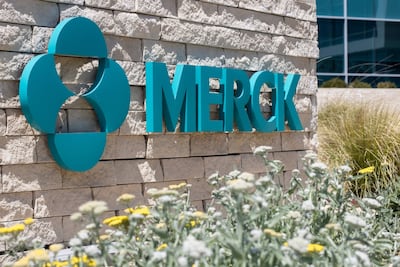It is unlikely that Novo Nordisk A/S will come to dominate the hemophilia space the way it has metabolic disease, but that is not for want of trying. The pivotal hit with its factor IXa- and factor X-directed bispecific Mim8 in the FRONTIER 2 trial in hemophilia A could allow the drug to take share from Roche Holding AG’s similarly-acting Hemlibra, currently the biggest seller in the condition.
Key Takeaways
- Novo Nordisk’s factor IXa- and factor X-targeted bispecific Mim8 has hit in its pivotal trial in hemophilia A
- On a cross-trial basis, Mim8 looks highly competitive with Roche’s market leader, Hemlibra
- Further data are needed to gauge Mim8’s chances of cutting into Hemlibra sales
FRONTIER 2 enrolled 254 people aged 12 or older with hemophilia A with or without inhibitors – antibodies produced by the patient’s immune system that prevent factor replacement therapy from working. After 26 weeks’ treatment, Mim8 allowed a statistically significant and superior cut in treated bleeding episodes with both once-weekly and once-monthly dosing regimens.
Bleeding incidents were cut in two groups of patients: those who had had no prior prophylaxis treatment and those who had taken prior protective coagulation factors.
The odd aspect here is that in previously untreated patients, the monthly injection appeared to work better than the weekly jab. The positive spin is that patients might be able to undergo less frequent injections but this finding is hard to explain mechanistically. Mim8 is intended to work by bridging factor IXa and X together, thereby replacing factor VIII, which patients with hemophilia A lack; theoretically, more frequent administration should work better.
Better than Hemlibra?
Despite the lack of a dose-response in the untreated patients, these data look like a slam-dunk for the company. Jefferies analysts wrote in a 13 May note that the results come close to their best-case scenario, with efficacy data that may challenge Hemlibra (emicizumab).
The rates of zero bleeds seen in patients not on prior prophylaxis are particularly competitive, with the analysts noting that Mim-8’s 86-95% looks rather better than Hemlibra’s 56%-60% in the HAVEN-3 trial, on which it was approved. These Hemlibra figures come from previously untreated subjects, though of course cross-trial comparisons are always imperfect.
Also important, the analysts wrote, are the data from the cohort of patients who were on prior coagulation factor prophylaxis. The patients in Hemlibra’s HAVEN-3 study who had had prior prophylaxis had a 68% cut in treated bleeds – better than Mim-8’s 48% – but 54% with zero treated bleeds, lower than Mim-8’s 66%.
As well as the potential edge on convenience – Hemlibra is given weekly – Mim8 has another possible advantage on safety, with Novo saying no deaths or thromboembolic events occurred in the trial. Hemlibra has a black box warning for thromboembolic events.
This is all very promising for Novo, but it is not a lock yet. A key future data point will be Mim8’s annualized bleeding rates; this will give an indication of the relative severity of disease of the Mim8 recipients, which could put the efficacy results in a different light.
Frequency of injection site reactions is another focus for the future. The Jefferies analysts believe that this must come in under 10% to give Mim8 an edge over Hemlibra, to which 13%-28% of patients in the HAVEN program reacted.
Novo plans to file Mim8 for approval towards the end of 2024. Full data from FRONTIER 2 will be presented at a conference, with the annual meeting of the International Society on Thrombosis and Haemostasis in late June a likely venue.
Even if the full data do outshine Hemlibra’s, Novo will still have a hard time breaking though. Hemlibra sales were $4.6bn last year, and will peak in 2028 at $5.9bn, according to Evaluate Pharma’s consensus forecasts.








